- Home
- About Us
- Tel : +91 33 4022 9591
BukharaView all the popular packagesOffers
1 Popular Packege(s)
Area 39.4 Square Kilometers
Population 0.24 Million
Winter Temperature -3°C Jan
Summer Temperature 19°C June
Best Time To Visit MAY TO SEPTEMBER
By plane

Uzbekistan Airways operates flights from
Moscow Domodedovo International Airport on Wed, Fri and Sun.
St. Petersburg on Sun,
Tashkent on Mon, Tue, Thu and Sat (by IL-114), on Wed and Fri (by A-310) and on Sat (by B-757, flying time: 1:05 hrs) (Summer Timetable 2010).
Urgench (Khiva) on Sunday nights to cater for tourism during high season only (Apr-Oct), 2 flights, 10mins apart at 21:00 and 21:10. (Summer 2014 timetable). Both flights then continue to Tashkent.
By train

Trains run from both Samarkand and Tashkent regularly.
By road

Bukhara is 560 km from Tashkent, 270 km from Samarkand, 470 km form Khiva, 920 km from Andizhan, 900 km from Fergana, 160 km from Karshi, 800 km from Kokand, 560 km from Nukus, 280 km from Shahrisabz, 380 km from Termez and 440 km from Urgench
Kalon Minaret
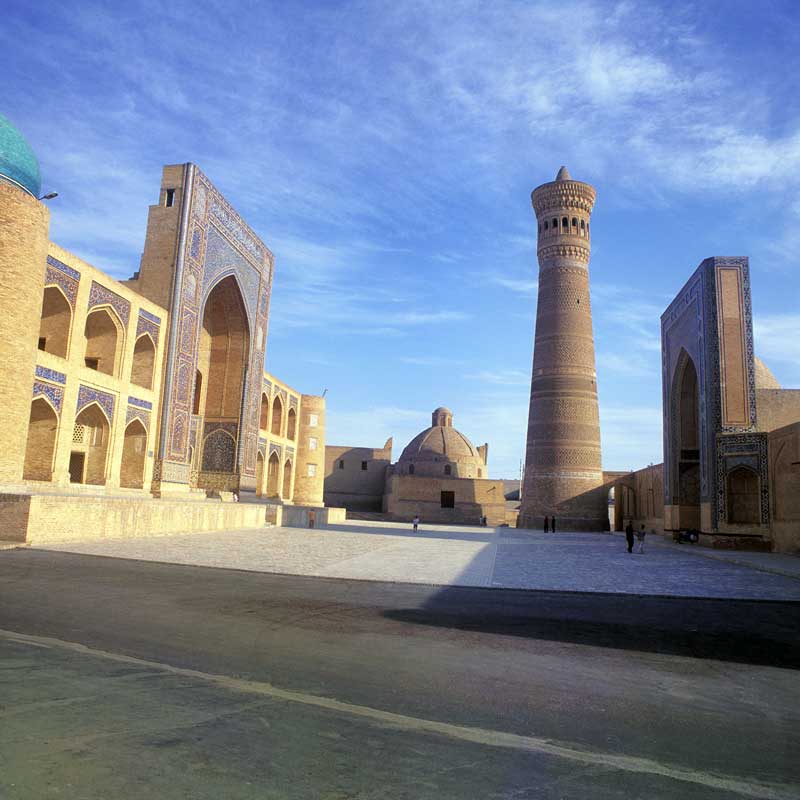
It was built by the Karakhanid ruler Arslan Khan in 1127. According to the legend Arslan Khan killed an imam. The imam asked the khan in a dream to lay the imam's head on a spot where nobody can tread on it. Thus the tower was built over the imam's grave. With a height of 47 m it is Bukhara's landmark. In its ornamental bands the glazed blue tiles were used for the first time in Central Asia. It gets its nickname as the "Tower of Death" because they once executed criminals by taking them to the top and pushing them out, leaving them to fall to their death. This practice stopped in the early 1900s.
Ark citadel

From the most ancient times the Ark was the fortified residence of the rulers of Bukhara. Everything could be found there - palaces, temples, barracks, offices, the mint, warehouses, workshops, stables, an arsenal, and even a prison. Nowadays there is a museum inside
Ismoil Somoni (Ismail Samani) Mausoleum
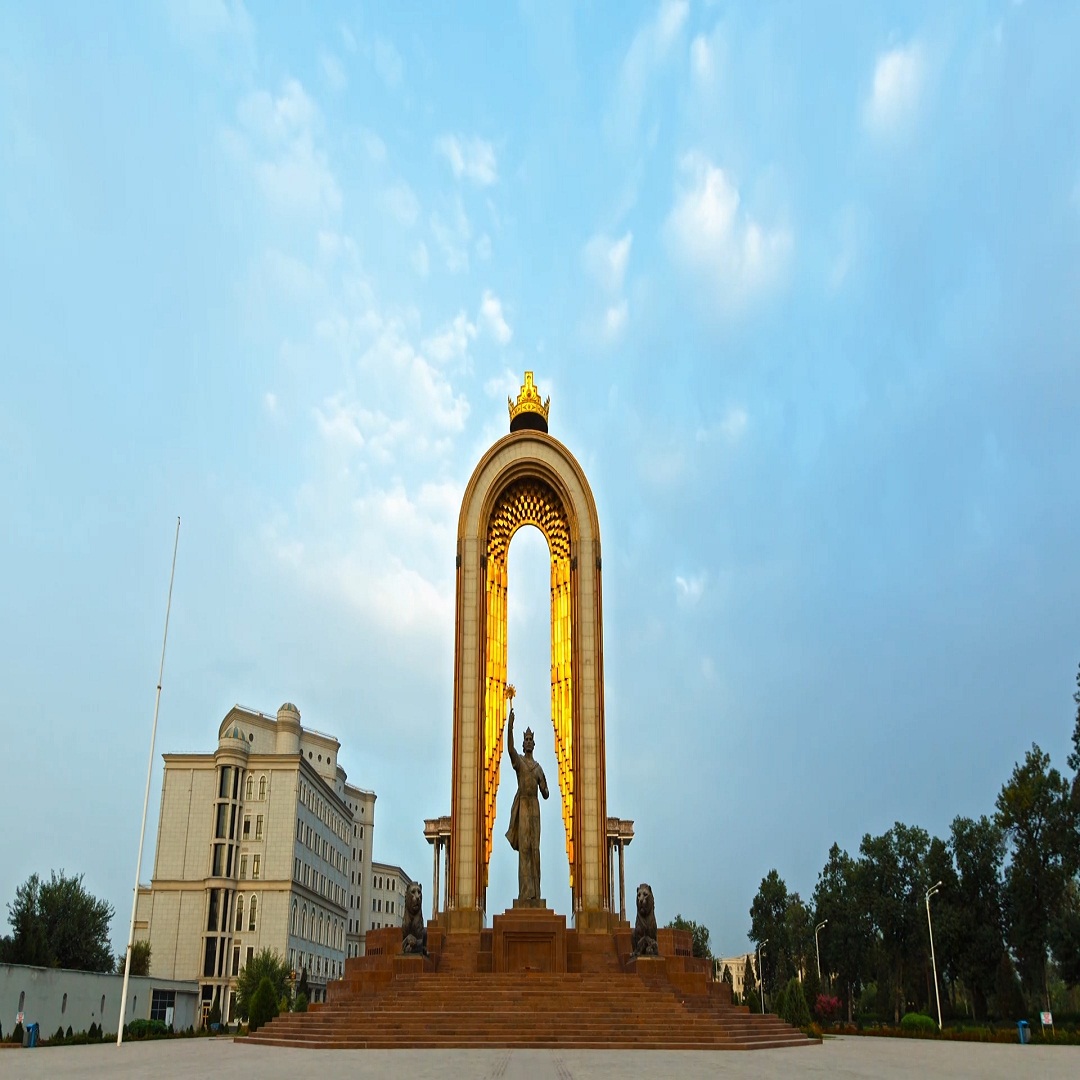
The mausoleum was built during the reign of Ismail Samani, one of the most outstanding members of the Samanids dynasty, who ruled Bukhara from 892 until 907. Originally, the mausoleum was intended for the grave of Ismail Samaniâs father, Akhmad, but later became the burial vault of the Samanids. It was completed in 905 and is the oldest Muslim monument in Bukhara. It is considered as a masterpiece of early Islamic architecture. Ismail b. Ahmad b. Asad Samani was born in 234/849 and died in 295/907. He was the first member of the Samanid dynasty ruling over all Transoxania and Fargana. He was governor of Bukhara on behalf of his brother Nasr. Ismail had defend Bukhara against attacks by Khwarazmian forces. He twice failed to send the 500,000 dirhams annual tribute to Nasr and had to defend the city against two attacks by Nasr. After Nasr's death in 279/892 Ismail became ruler of all Transoxania. He transfered the capital to Bukhara and was recognized as governor by caliph al-Motazed (279-89/892-902). In 280/893 he led an expedition north into the steppes, capturing Ṭaraz (modern Dzhambul/Kazakhstan), taking an immense booty of animals and Turkish slaves, and converting a Nestorian Christian church into a mosque. Ismail's greatest achievement was the defeat of Amr b. Layt in a battle near Balk in 287/900. Amr had received from caliph al-Moʿtażed eastern Persia and Transoxania, which entailed deposing Ismail as governor. Amr invaded the upper Oxus (Amu Darya) provinces, but was decisively defeated by Esmaʿīl. The ʿAbbasids at Baghdad were thus relieved of pressure from the aggressive Saffarids, and the caliph formally appointed Ismail governor of Khorasan, Sistan, Ray, Ṭabarestan, and Isfahan, in addition to his Transoxanian provinces. Samanid amirs were, however, able to retain permanent control of Khorasan and Transoxania only. Although he still officially recognized the caliphsâ overlordship in the Friday sermon and on his coins), Ismail took advantage of his distance from Iraq and his new prestige to function as an independent sovereign. There is no evidence that he ever forwarded regular tribute or taxation to Baghdad. He spent his last years witgh battles against the Zaydi Shiite imams in the Caspian provinces, extending Samanid power westward across northern Persia, and repelling a Turkish invasion from the steppes. Ismail launched an offensive against Ṭabarestan and northern Persia and by 287/900 held territory as far west as Ray and Qazvin, though again his successors were not able to hold on to these areas. When Ismail died he was succeeded by his son Ahmad (295-301/907-14). Ismalil became renowned for justice and piety and for serving the caliph and his interests faithfully and is considered as the greatest of the Samanids
Shahriston Market
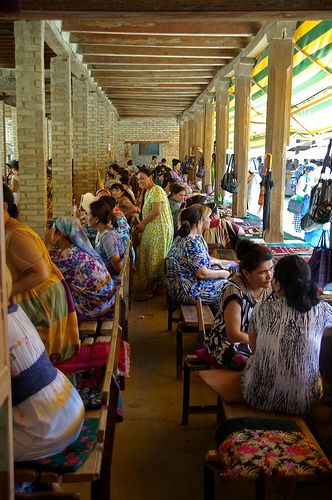
The virtually tourist-free Shahriston Market is in a large courtyard, where locals trade jewellery, carpets, clothing and other handicrafts among themselves and relative bargains can be had compared to things on sale down the street in the traveller-oriented covered markets.
Tim Abdulla Khan
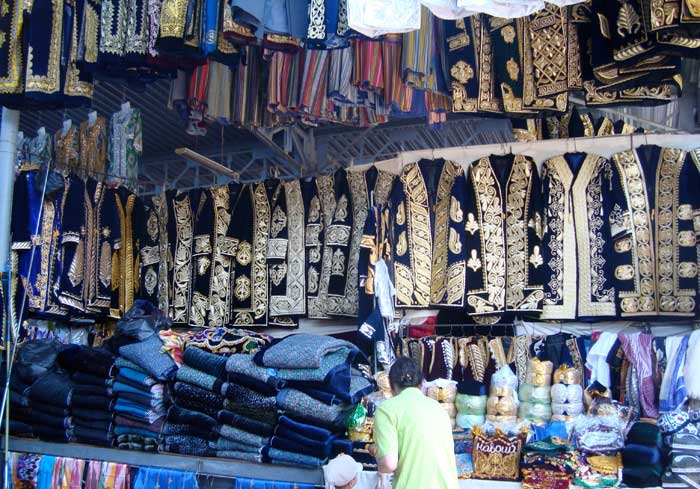
For carpets, you couldnât ask for a better shopping atmosphere than at the silk-weaving centre in this late-16th-century building, located near Taki-Telpak Furushon Bazaar (a tim was a general market). Vendors are not pushy and will openly inform you on whatâs handmade and whatâs machine-made. You can watch silk-clothing makers in action here.
Old Bukhara
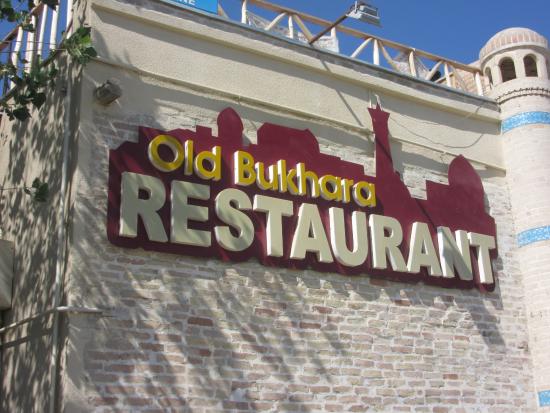
Samarkand Str., Buxoro, Uzbekistan
Budreddin Restaurant
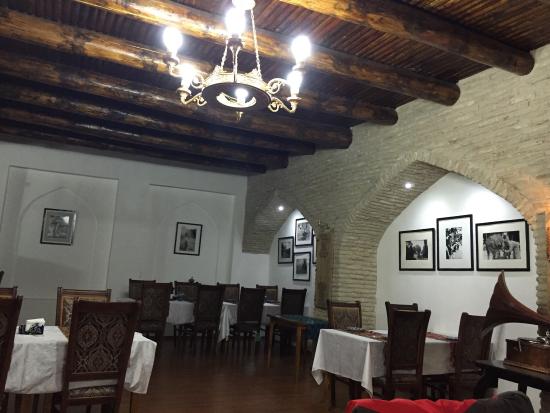
Uzbekistan St, Yangi Bozor, Uzbekistan

